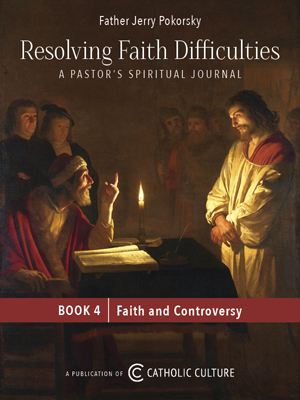Catholic World News News Feature
Motu proprio takes effect September 13, 2007
Summorum Pontificum, the motu proprio with which Pope Benedict XVI encouraged wide use of the Roman Missal of 1962, took effect on Friday, September 14.
The Pope's initiative-- which was made public on July 7 after months of intense speculation-- calls upon pastors to "willingly accept" requests from the faithful for access to the pre-conciliar liturgy. Pope Benedict explained that his motu proprio was an effort to promote "interior reconciliation in the heart of the Church."
The motu proprio sets forth new norms for the Roman liturgy, superseding the norms previously established by Pope John Paul II in his own motu proprio of 1988, Ecclesia Dei. Pope Benedict emphasizes that there are not two different rites, but two different forms of the Roman rite: the ordinary form, according to the current Roman Missal, and the extraordinary form, which uses the Missal that was in universal use prior to the liturgical changes that followed the Second Vatican Council.
The full text of Summorum Pontificum can be found in the original Latin on the Vatican web site. An unofficial English translation is also available.
Pope Benedict issued this motu proprio-- the 5th such document of his pontificate-- along with a letter to the world's bishops explaining the move. The text of the Pope's letter is also available on the Vatican web site.
In his explanatory letter the Holy Father acknowledges that some bishops expressed strong opposition to the release of the motu proprio. Their opposition, he writes, was based on fears that the wider use of the pre-conciliar liturgy could appear to undermine the authority of Vatican II, and/or cause divisions with the Catholic Church. These fears will prove unfounded, Pope Benedict says, if the faithful recognize the two forms of the Roman rite as equally valid forms of the same universal liturgy.
The Pope also acknowledges that some Catholics find a greater sense of reverence in the older liturgy-- in what will now be known as the extraordinary form of the Roman rite. He voices the hope that "the two forms of the usage of the Roman rite can be mutually enriching," suggesting that the simultaneous existence of the two different forms will encourage an organic development of new liturgical practices, stimulating "the reform of the reform."
Cardinal Dario Castrillon Hoyos, the president of the Ecclesia Dei Commission, which has jurisdiction over the questions regarding the traditional Mass, will celebrate the "extraordinary form" in the basilica of Loreto, Italy, to mark the inauguration of the new liturgical regulations on September 14.
In the US, the Eternal Word Television Network will broadcast a Solemn High Mass, celebrated according to the 1962 Roman Missal, at 8 on Friday morning, September 14. The program will be rebroadcast at 6 in the evening of the same day, and at noon on Saturday, September 15. EWTN has provided a Mass booklet to help the faithful follow the Mass.
Catholic bishops around the world have offered widely varied responses to Summorum Pontificum, with some bishops welcoming the return of the older liturgy and others discouraging its use. Some bishops have told their priests that they should not use the 1962 Missal without explicit permission-- although the Pope's motu proprio explicitly states that for the use of the extraordinary form at a private Mass, "the priest has no need for permission from the Apostolic See or from his ordinary."
For more on the motu proprio, see:







